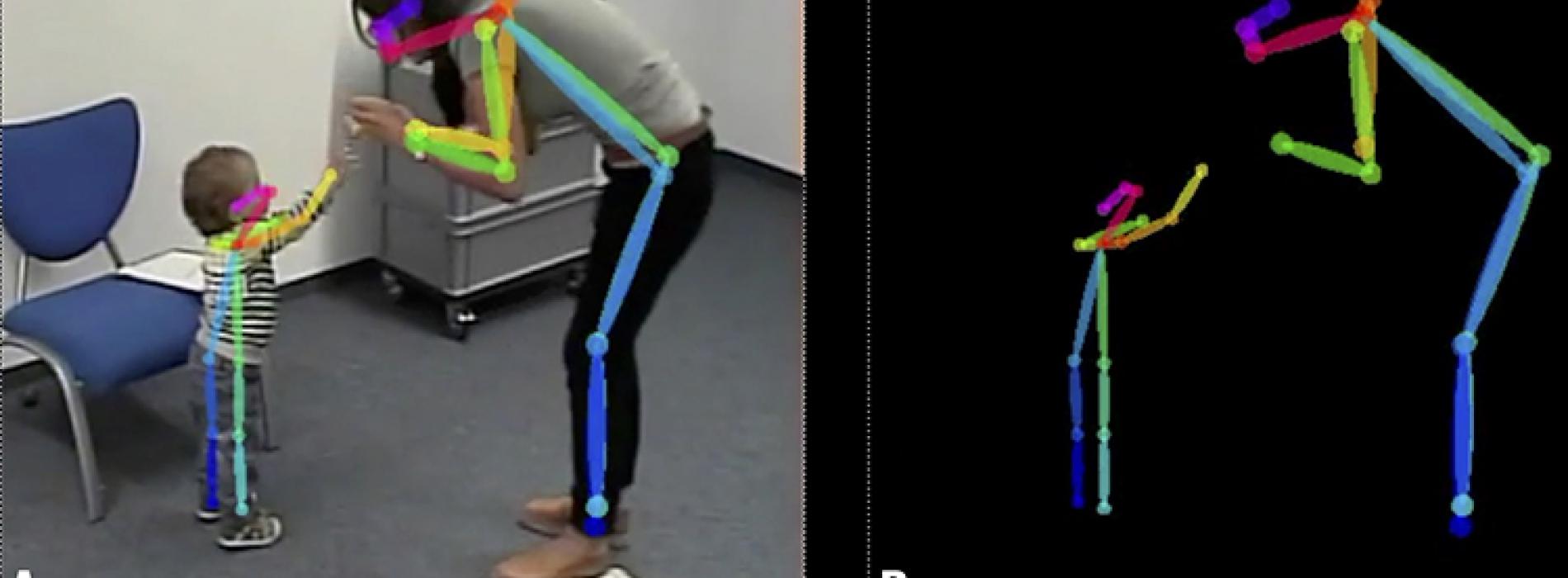
 News
News
Using video for the early detection of autism
Example of ‘skeleton’ extraction using OpenPose on an image extracted from the recording of a social scene: (A) OpenPose keypoints overlaid on the video recording (B). OpenPose keypoints over a black background, preserving the bare minimum of scene features necessary to identify the social interaction. © Kojovic, Natraj, Mohanty, Maillart, Schaer.
Using artificial intelligence, a team from the UNIGE has developed a device for the early detection of autism spectrum disorder in children.
Individuals affected by autism spectrum disorder often present communication issues and difficulties in social interactions. Although very frequent, this disorder is challenging to diagnose before the age of five. However, early care can compensate for these difficulties by providing specific behavioural intervention focused on the development of skills affected by autism. This is why an interdisciplinary team at the University of Geneva (UNIGE), Switzerland, has developed an artificial intelligence (AI) algorithm based on the automated analysis of videos, making it possible to study children’s non-verbal communication in an anonymous and standardised manner. Easy to use, this technology correctly classified 80% of cases from short videos showing a child with or without autism under 5 playing with an adult. These results, to be discovered in the journal Scientific Reports, pave the way for a tool for the early detection of autistic disorder.